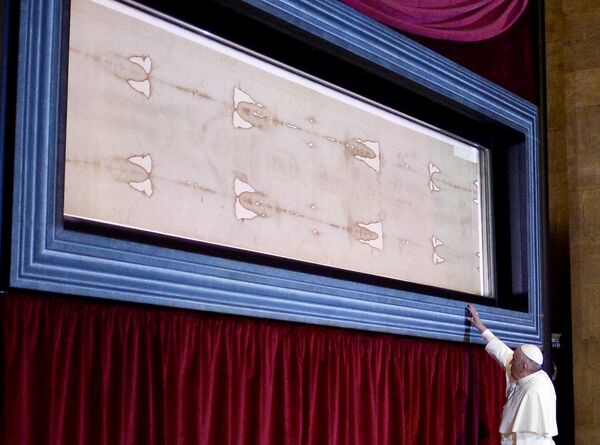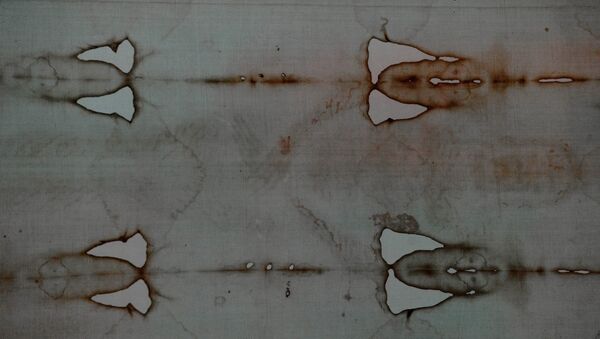The shroud is 14 feet long and shows a faint image of a dead man who appears to have been crucified.
Visually difficult to make out, the image becomes clearer as a photo negative.
The researchers say the linen cloth contained "nanoparticles," which would not be found in the blood of a person who had died of natural causes.
Here's the peer-reviewed paper on the new research on the Turin Shroud: https://t.co/dHlRq1FXWz
— Fr Timothy Finigan (@FatherTF) July 18, 2017
The particles are measured in nanometers — which is one billionth the length of a meter.
"They have recorded a scenario of great suffering, whose victim was wrapped up in the funeral cloth," said Elvio Carlino, a researcher at the Institute of Crystallography.
"These findings could only be revealed by the methods recently developed in the field of electron microscopy," said Mr. Carlino.
"They have a peculiar structure, size and distribution," said Professor Giulio Fanti, from the University of Padua's Department of Industrial Engineering.
He said the findings also contradicted the theories of those who believed the shroud was a medieval forgery.
In 1989, the shroud was subjected to radiocarbon dating which found it was only 700 years old.
But Professor Fanti conducted spectroscopy tests on it in 2013, and claimed the cloth dated from between 300 BC and 400 AD.
The latest research was carried out by the Instituo Officia dei Materiali in Trieste, and the equally well-respected Institute of Crystallography in Bari.
The new research backs up work carried out in the early 1980s which found the stains tested positive for both hemoglobin and albumin.
"We can conclude for now that the Shroud image is that of a real human form of a scourged, crucified man. It is not the product of an artist," concluded the Shroud of Turin Research Project team.
The Roman Catholic Church has never taken an official position on the authenticity of the relic, which is housed at St. John the Baptist Cathedral in Turin.

But when he visited the cathedral in 2015 Pope Francis prayed before it.
"The shroud attracts us toward the martyred face and body of Jesus. At the same time, it pushes toward the face of every suffering and unjustly persecuted person. It pushes us in the same direction as the gift of Jesus' love," the Pope told the faithful.
It is not clear how the shroud got from the Holy Land to Italy.
Earlier this year, it was reported the room in Jerusalem where Jesus was purportedly interred before he rose from the dead is at "very real risk" of a "catastrophic collapse."
In April, Oxford University geneticist George Busby and Pastor Joe Basile revealed they would be using DNA samples from the shroud in a bid to find living descendants of Jesus Christ's family.


